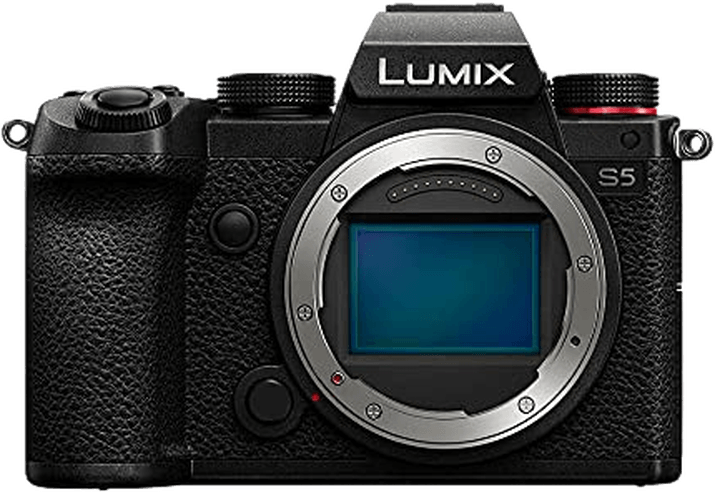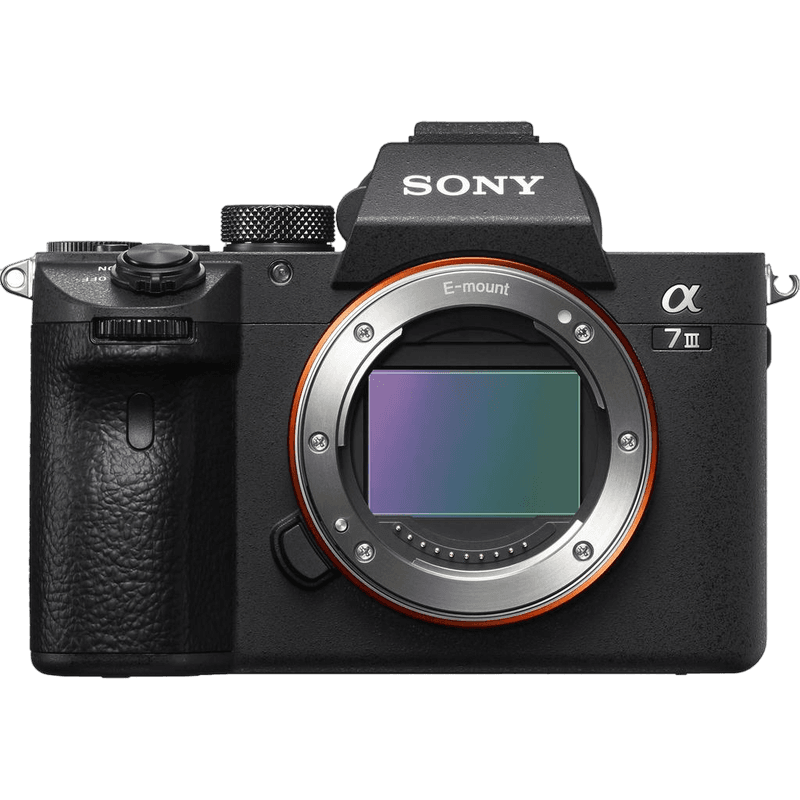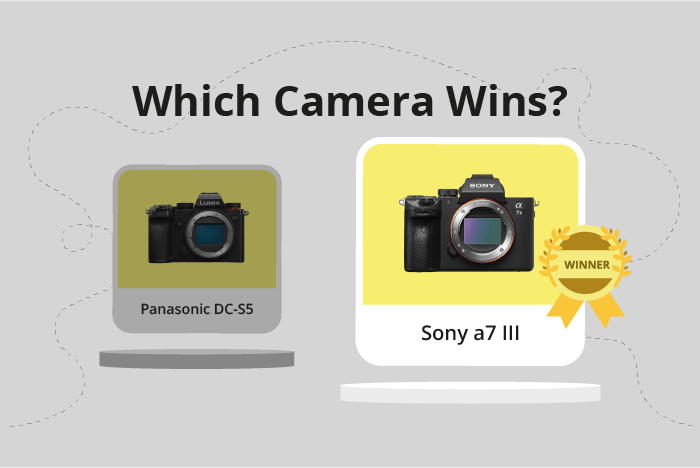Panasonic Lumix DC-S5 vs Sony a7 III Comparison
Panasonic Lumix DC-S5

Sony a7 III

The Sony a7 III edges out the Panasonic Lumix DC-S5 with a score of 81, compared to the Lumix’s 79/100. Both cameras are mirrorless and were launched at similar price points, with the a7 III released in 2018 at $2000, and the Lumix DC-S5 in 2021 at $1999. They share comparable dimensions, with the Sony a7 III measuring 127 x 96 x 74mm and weighing 650g, while the Lumix DC-S5 is slightly larger at 133 x 97 x 82mm and heavier at 714g.
The Sony a7 III’s higher score indicates its overall performance advantage. On the other hand, the Panasonic Lumix DC-S5, although slightly bulkier, boasts a more recent release, potentially offering updated technology and features. Each camera has its strengths, making the choice between them a matter of personal preference and specific needs.
Panasonic Lumix DC-S5 vs Sony a7 III Overview and Optics
The Sony a7 III outperforms the Panasonic Lumix DC-S5 in optics, scoring 81/100 compared to the Lumix DC-S5’s 78/100. Both cameras share several specifications, including 24.2 megapixels, CMOS sensor type, full-frame sensor size, and image stabilization. Despite these similarities, the Sony a7 III takes the lead in certain aspects.
The Sony a7 III has a superior shooting speed of 10 frames per second (fps), compared to the Lumix DC-S5’s 7 fps. This allows for capturing fast-moving subjects and moments with better precision. Additionally, the a7 III’s processor, the Bionz X, contributes to the camera’s overall performance and image quality. The DXOMARK score for the a7 III sensor is 96, slightly higher than the Lumix DC-S5’s score of 94, indicating better image quality and low-light performance.
On the other hand, the Lumix DC-S5 has a Leica L lens mount, which is compatible with a wide range of high-quality lenses. This gives photographers more options and flexibility when choosing lenses for various shooting scenarios.
While both cameras offer excellent optics, the Sony a7 III edges out the Panasonic Lumix DC-S5 due to its faster shooting speed, better processor, and slightly higher DXOMARK sensor score. The Lumix DC-S5, however, remains a strong contender with its versatile Leica L lens mount. Ultimately, the choice between these cameras depends on the photographer’s priorities and preferences.
Panasonic Lumix DC-S5 vs Sony a7 III Video Performance
The Panasonic Lumix DC-S5 outperforms the Sony a7 III in video capabilities with a score of 83/100, compared to the Sony’s 70. Both cameras share common specifications, such as a maximum video resolution of 4K and maximum video dimensions of 3840 x 2160. However, the Panasonic Lumix DC-S5 boasts superior features that contribute to its higher score.
The Lumix DC-S5 has a higher maximum video frame rate of 60fps, allowing for smoother and more detailed footage compared to the Sony a7 III’s 30fps. This difference in frame rate provides greater flexibility for filmmakers and content creators, especially when capturing fast-paced action or slow-motion scenes.
Both models allow users the ability to create dynamic and visually stunning time-lapse sequences without requiring external software or equipment.
While the Sony a7 III falls short in some areas, it remains a strong contender in the world of mirrorless cameras and offers excellent image quality. However, its limitations in video capabilities may be a deciding factor for those prioritizing video performance.
The Panasonic Lumix DC-S5 emerges as the superior choice for video capabilities due to its higher frame rate and built-in time-lapse functionality. Meanwhile, the Sony a7 III may still be suitable for photographers who prioritize image quality over video features. Ultimately, the best camera for a user depends on their specific needs and preferences.
Panasonic Lumix DC-S5 vs Sony a7 III Features and Benefits
The Panasonic Lumix DC-S5 outperforms the Sony a7 III in features, scoring 85/100 compared to the Sony’s 81/100. Both cameras share several specifications, including a 3-inch screen size, touchscreen capabilities, flip screens, a lack of GPS, and the presence of WIFI and Bluetooth connectivity.
The Lumix DC-S5 surpasses the a7 III in screen resolution, offering 1,840,000 dots compared to the Sony’s 921,600 dots. This higher resolution provides clearer and sharper image previews, making it easier for photographers to review their shots and make any necessary adjustments.
On the other hand, the Sony a7 III still has strong features despite its slightly lower score. It matches the Lumix DC-S5 in terms of screen size, touchscreen functionality, flip screen availability, and connectivity options. These similarities ensure that users can still enjoy a high-quality photography experience with the Sony camera.
Considering each point, the Panasonic Lumix DC-S5 holds a slight advantage over the Sony a7 III in terms of features due to its higher screen resolution. This improvement allows for better image previews and an overall enhanced photography experience. However, the Sony a7 III remains a strong contender with comparable features and performance. Ultimately, the choice between these two cameras will depend on individual preferences and priorities, but the Lumix DC-S5’s superior screen resolution gives it the edge in this comparison.
Panasonic Lumix DC-S5 vs Sony a7 III Storage and Battery
The Sony a7 III edges out the Panasonic Lumix DC-S5 in storage and battery with a score of 80. Both cameras share similarities, such as having two memory card slots and accepting UHS-II compatible SD/SDHC/SDXC cards.
The Lumix DC-S5 has a battery life of 440 shots, which is less than the Sony a7 III’s impressive 750 shots. Furthermore, the Sony a7 III accepts Memory Stick Duo/Pro Duo/Pro-HG Duo cards, adding versatility to its storage options.
Alternatives to the Panasonic Lumix DC-S5 and Sony a7 III
Are you still undecided about which camera is right for you? Have a look at these popular comparisons that feature the Panasonic Lumix DC-S5 or the Sony a7 III:

